
Kachinas’ goalie parents and coaches, this is Goaltending Director Hiroki Wakabayashi.


The Iceberg of Goaltending
“How would you like it in your job if every time you made a small mistake,
a red light went on over your desk and 15,000 people stood up and yelled at you.”
Jacques Plante (NHL Hall of Famer)
Goaltender is the position where you are mostly praised by highlight reel saves and unfortunately very often judged by poor mistakes or unlucky bounces.
However, those saving actions = “Jobs at the Shot” are only small but prominent part of the goalie’s game, just like the tip of the iceberg above the sea.
Not many people,,, including some so called hockey experts really understand what the goalies are doing beneath water. So let’s take a look at the picture.
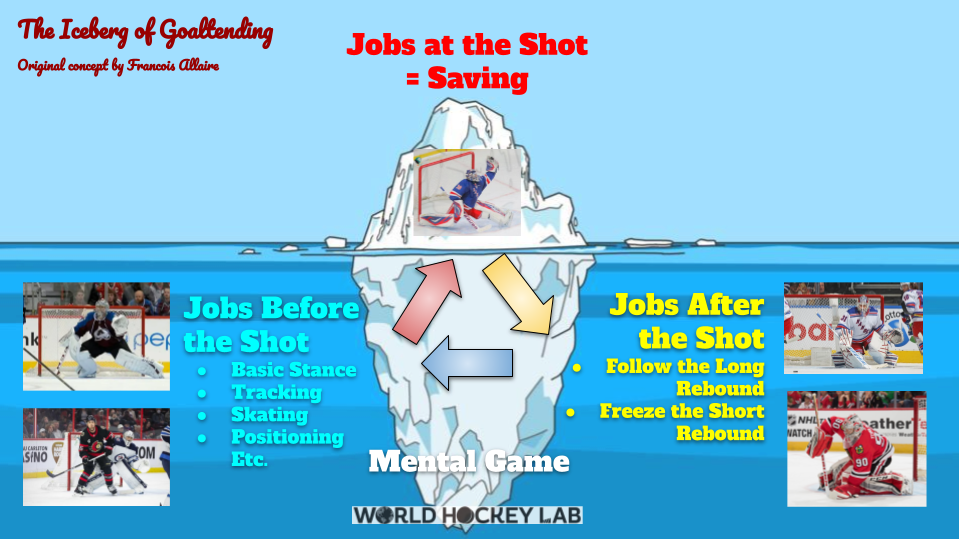
1. Jobs Before the Shot
Your jobs as a goalie start way before the shot is taken.
- First, you must find the puck and track it through the traffic
- Analyze the situation and identify the scoring options
- Skate to the optimal position to get in front of the puck
- Then present the good basic stance, etc.
Above must be all done BEFORE THE SHOT IS TAKEN.
Yeah, it’s already a lot to do and it means “Jobs Before the Shot” are huge part of the goaltending even if they are less fancy and visible. If you work hard and well BEFORE the shot, the next part would get a bit easier.
2. Jobs at the Shot
Obviously goalies must react to the shot and pull out the best saving skill selection according to the situations in order to stop the puck.
3. Jobs After the Shot
No one likes to deal with rebounds but you have to do it unless the puck is out of bounce or,,, ended up inside of the net.
- The best scenario is to squeeze the puck into your equipment and get a whistle.
- Freeze (Cover) the rebound if you give up the short rebound within your reach.
- Follow and reposition yourself if you give up the long rebound outside of your reach. This will bring you all the way back to the
“1. Jobs Before the Shot” - These are the essential habit you must develop in order to play in a competitive hockey as I talked about in the last newsletter.
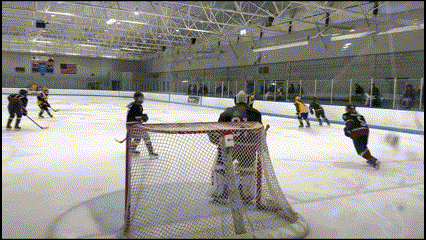
Now you see how the puck stopping job really works. This flow-chart simplifies the goalie’s game and makes it easier for you to analyze what part of the game went wrong when you got scored on.
Also, we must not forget about the importance of working tirelessly on the Jobs Before and After the shots in order to have a success in net.
Mental Game is another huge part of the goalie’s job that is bedrocking everything above but we’ll talk about it later.
Hey, it’s not done yet,,,
I’m excited to introduce the special article by Coach Jen Taylor this month. Coach Jen is currently on IR list but we hope to see her on the ice soon. Enjoy her article by then.
Coach Jen’s Goalie Skates 101
- Goalie skates have had dramatic innovations over the past 5 years. One of my favorite innovations was the removable skate blade.
New skate blades are taller, longer, and contact the ice quicker when pushing. This gives the goalie more control with goalie skating which takes strain off the adductor and hamstring muscles. More control helps decrease the risk of joint and muscle injuries.Over the course of a season, the sharpenings will wear down the amount of blade. Replacing worn down blades can dramatically improve skating. I have been replacing mine around every 10 to 12 months. If you buy used skates, be sure to check the amount of blade, and make sure the replacement blades for that model are still on the market. - Sharpening is incredibly important for goalie skates.
There are many different options for sharpening skates and many of these choices are made from personal preference. When getting skates sharpened, it is important to pick the hollow or radius that the blade will be sharpened at.
A blade with less hollow will provide more glide, while a deeper hollow will give more “bite” on the ice. The radius will be a fraction from 1″ (almost flat hollow) to 5/16″” (deepest hollow).
Common goalie hollows are (flatter hollow) 5/8th, 1/2″, and 3/8″. (deep hollow)
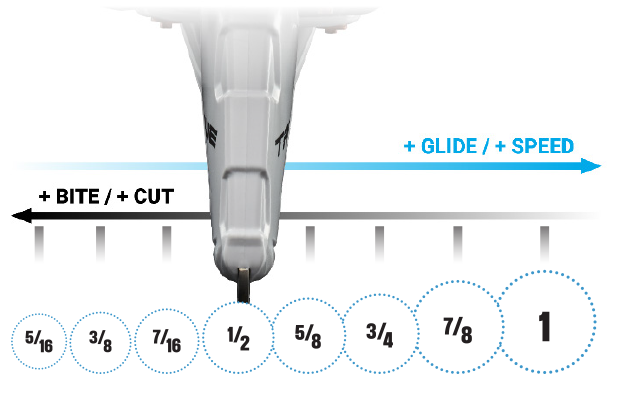
* REMEMBER! New skates have a coating on the blade and will need to be sharpened before use. Common factors to consider with the skate blades: the hardness/ softness of the ice, the goalies weight, the amount of “bite” needed for goalie skating. In general, a goalie will skate better (have more bite) with a sharper skate on colder and harder ice, whereas a sharper skate on softer ice will feel “sticky” and shuffles/ t pushes will be difficult. If too dull of a skate is used on hard ice, the goalie will struggle with getting their edge to bite the ice. Be aware of this when traveling to different rinks and playing on different sheets of ice. In general, I recommend starting with a 1/2″ hollow for new goalies and then determining if they want a deeper or more shallow hollow. When you find the hollow that you like, mark the number on the skate so you do not forget it when you go to have your skates sharpened.
- Caring for your gear will help it last longer, dry your blades after each use at the rink and take your skates out of your bag to dry when you are home. Check the laces to make sure they are not fraying.
- Goalie skates have a different fit than player skates, so you may have to size up half a size when buying goalie skates. The toes should not rub up against the toe cap or cowling. When you are trying on goalie skates, be sure to check the fit in the stance with proper knee and ankle flexion with the weight on the ‘balls” of the feet. The heel should ‘lock’ into the back of the skate. If the skates are too tight, the feet will become painful, and can lead to ingrown toenails or bunions. If the skates are too big, skating will be difficult, and blisters can form.
- A sweet stick is an affordable accessory that can touch up edges between professional sharpenings. Frequency of sharpening depends on the goalie, the frequency of on ice sessions, and their style of play. In general, I recommend sharpening at least once a month. For elite goalies using skates with removable blades, I recommend buying a second set of sharpened blades to have on hand, especially during travel.
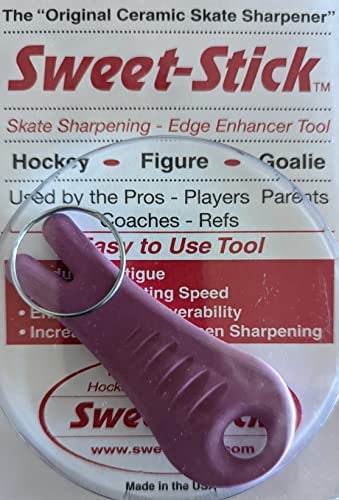
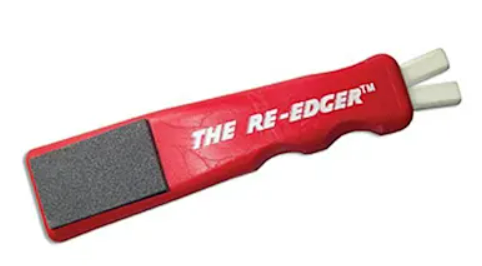
- If the blades are too sharp on the ice, you can dull them on the plastic on the door of the player bench, Rub the skate back and forth along the plastic.
- Goalie skates can be profiled, rockered, and pitched which changes the nature and balance of the skate. The blade will be custom sharpened to the goalies specifications, but this is a topic for a different time 🙂
- If you have a question about goalie skates or sharpening, feel free to ask one of the coaches, we love talking about gear
Naturopathic Doctor
That’s it for this month.
Feel free to contact me if you have any questions.
